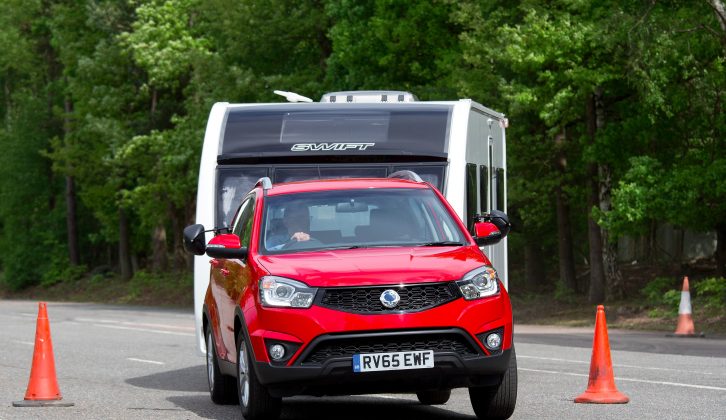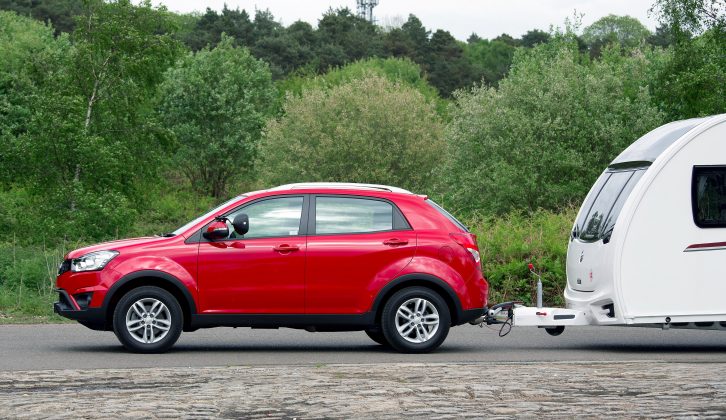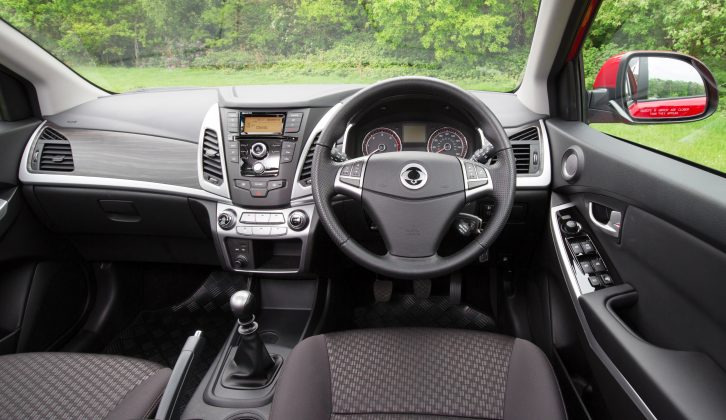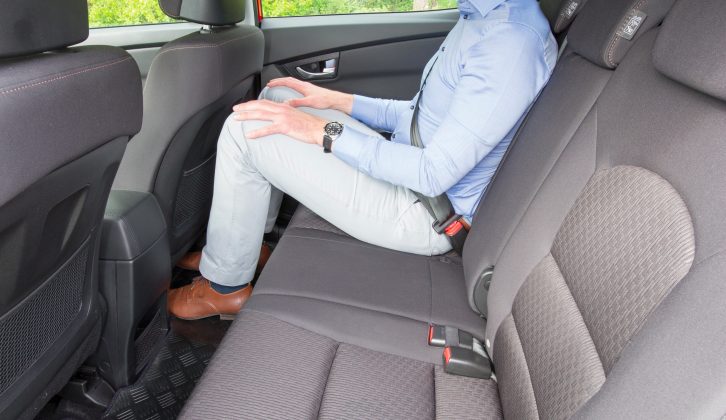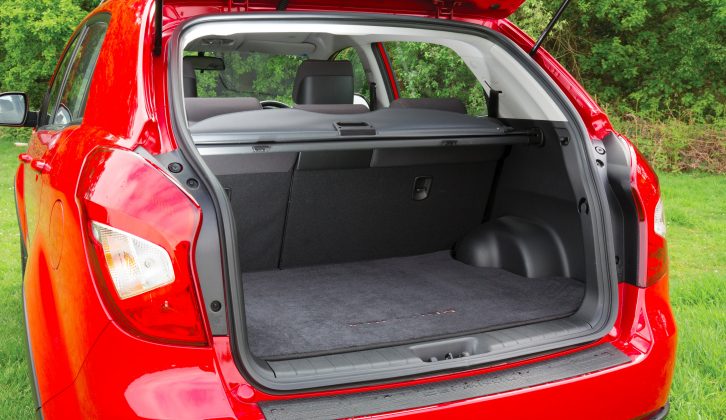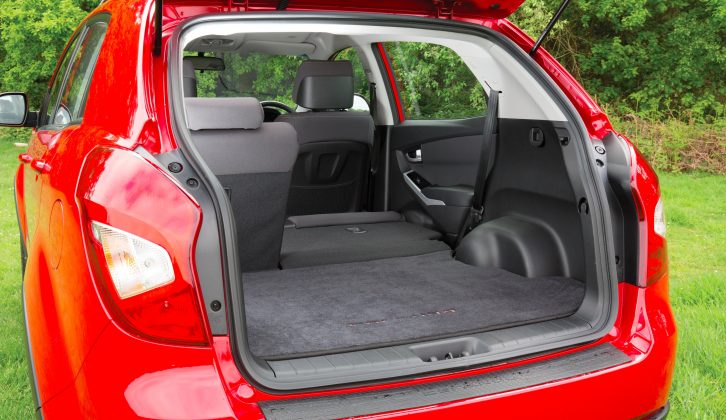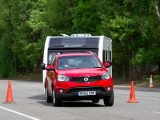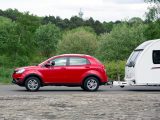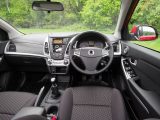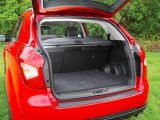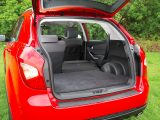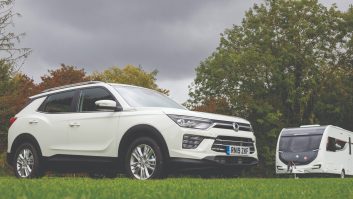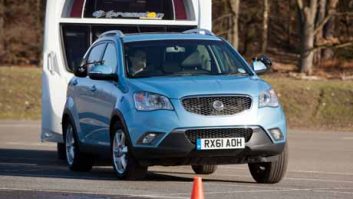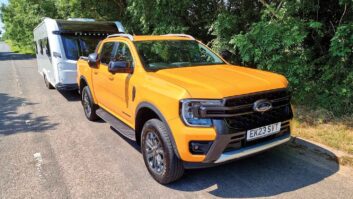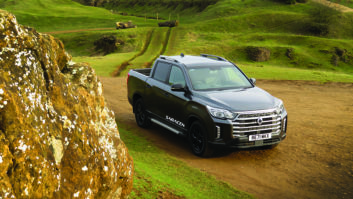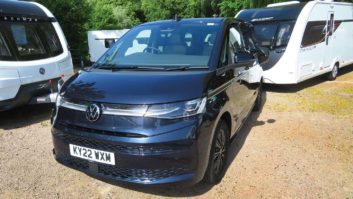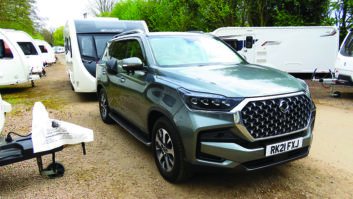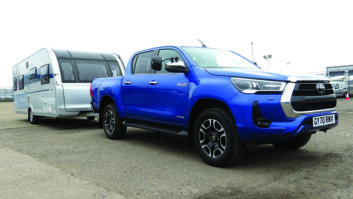Verdict
We’re tempted to score the SsangYong Korando higher for being cheap, heavy and powerful. However, it doesn’t feel as secure at speed as a good tow car should. Even so, the car maker definitely deserves credit for offering so much at this price.
Pros
It has a high kerbweight and a punchy engine
It is sold new with a five-year warranty
Cons
The steering is vague and it’s not too stable when towing
You get a lot of car for your money with the SsangYong Korando. It has been around for a while, but keeps receiving improvements to narrow the gap to better-known crossovers. The biggest recent change is a new 2.2-litre diesel engine, which promises more power and better fuel economy.
Despite this, the price remains low; our entry-level test car costs under £16,000.
So, as well as finding out what tow car ability the SsangYong Korando has, we also want to know if corners have had to be cut to get it down to a price.
You won’t find another new crossover at this price with more promising towing stats
Towing
You won’t find another new crossover at this price with more promising towing stats than the SsangYong Korando. Its kerbweight of 1701kg is unusually high, even for the front-wheel-drive version tested here. That gives an 85% match figure of 1446kg. The legal towing limit is 2000kg.
The engine copes well with any sensibly matched caravan, such as the Swift Challenger 590 (Mass in Running Order: 1410kg) that we towed. SsangYong’s engine delivers 295lb ft of torque from 1400rpm right up to 2800rpm and accelerated from 30-60mph in 12.2 seconds. That’s enough for punchy overtaking and to maintain speed over hills.
However, the Korando isn’t as stable as the best tow cars. In an emergency lane change, it lurches, and its stability-control system cuts in at speeds that most rivals would take in their stride.
Even in regular towing, it doesn’t feel settled. We tested the Korando at the Tow Car Awards, pulling caravans without stabilisers. For this review, we towed a caravan fitted with a stabiliser, and this toned down the SsangYong’s nervousness. However, it didn’t cure it.
The soft suspension feels too loose, so gusts of wind, road bumps or overtaking high-sided vehicles affect the Korando more than they do the best crossovers. Steering which is lethargic either side of straight-ahead but then sharpens up doesn’t help make small steering corrections accurate, either. While the other crossovers we’ve tested over the past couple of years have been more stable, most cost thousands more – sometimes double. Even so, the SsangYong Korando doesn’t feel as secure as we’d like at speed.
Everyday Driving
In regular driving, the Korando suits a laid-back approach. Drive with any spirit and the soft suspension can be caught out, leaning heavily in corners, or pitching and wallowing on country roads. But, at a steady pace, the Korando is quite comfortable, although it does thump into bigger bumps.
Without a caravan, you can really appreciate the engine’s determined performance. The gearbox is clunky but, with so much pulling power, you don’t have to change gear often.
Like the engine it replaces, though, the new 2.2-litre is not quiet. Even assuming a gentle right foot, it is clattery. Once up to speed, wind, road and engine noise aren’t excessive.
It’s not a polished drive, but the Korando is reasonably quick and mostly comfortable.
Space
Despite being priced to rival the Ford EcoSport and other small crossovers, the Korando is about the size of the Hyundai Tucson.
There’s plenty of room for the driver and front-seat passenger, and those in the back are scarcely any worse off. It’s impressive that SsangYong has kept a flat floor in the back with no intrusion from the transmission. Combine that with the car’s generous width and the Korando is better than most competitors at carrying three adult passengers in the rear seats, which recline if anyone wants to nap. However, they don’t get air vents to keep cool.
The boot is a good size, and there’s no load lip over which to lift luggage. Fold down the seats and there’s only the slightest slope to the load floor.
The standard of finish might not have Hyundai worried, but that’s hardly to be expected at the price. Aside from the dated backlit orange screens, the cabin feels modern and well-built.
Running Costs
You won’t find another new crossover of this size, weight and performance costing less than the Korando. SE spec is the cheapest SsangYong offers, but it includes manual air-con rather than climate control, electric windows front and rear, and 16in alloy wheels. It has front, side and curtain airbags, stability control and IsoFix child-seat fixings.
The combined economy of 53.3mpg trails most rivals, but we achieved a reasonable 28.3mpg on tow. Resale values aren’t great but they’re not disastrous, and there’s the reassurance of SsangYong’s five-year warranty.
Technical Specifications
| Engine Size | 2157 cc |
| Kerbweight | 1701 kg |
| 85% KW | 1446 kg |
| Towball Limit | 80 kg |
| Maximum Towing Limit | 2000 kg |
| Power | 176 bhp |
| Torque | 295 lb ft |
| Offical MPG | 53.3 mpg |
| CO₂ | 139 g/km |
